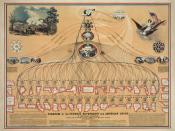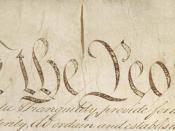The government of the United States is constantly changing. From the moment the country was born until today, there have been many eras and concepts that have transpired over the years. The United States federal government and state and local governments have gone through periods for transition from 1781 to the present day in which their relationships where continuously changing.
In order to understand the different eras of U.S. governmental history, one must first understand the history of the relationships between the federal government and state and local governments. The Constitution of the U.S. establishes a direct link between state governments and Congress. It gives Congress specific powers like declaring war and creating armies. The U.S. Constitution also bars states from performing acts that would undermine the federal government; some of those acts include making treaties, coining money, and making war. State governments can also create/destroy local governments. Federal, state, and local governments all interact with one another.
As each level of government interacts with the other(s), there are clear distinctions in the levels of interaction that take place. The different levels of government in the United States have something called formal interaction. There are four types of formal interaction: national to state, state to national, nation equals state (concurrent powers), and state to local.
The first form of interaction is national to state. National to state interaction gives the federal government most of the power over the land. The federal government has the power to have an army. It ensures a republican form of government; this means that when a state is admitted to the union, the federal government controls how the state is created (in the form of laws). This form of interaction also has something known as the Supremacy Clause; this makes the Constitution the supreme law...


